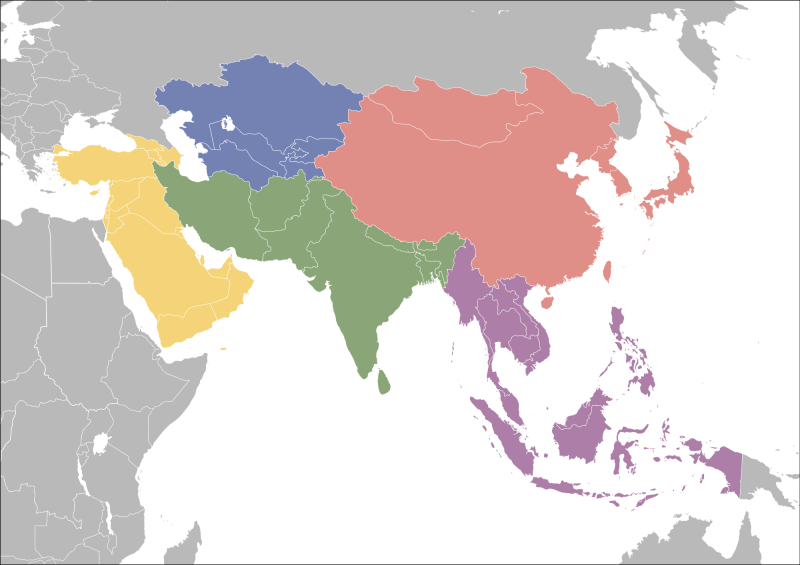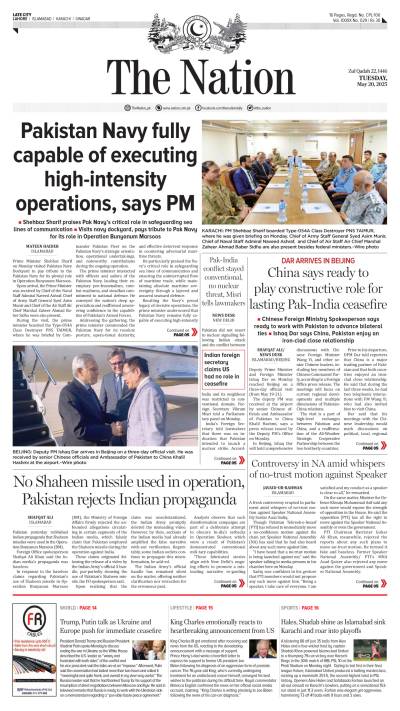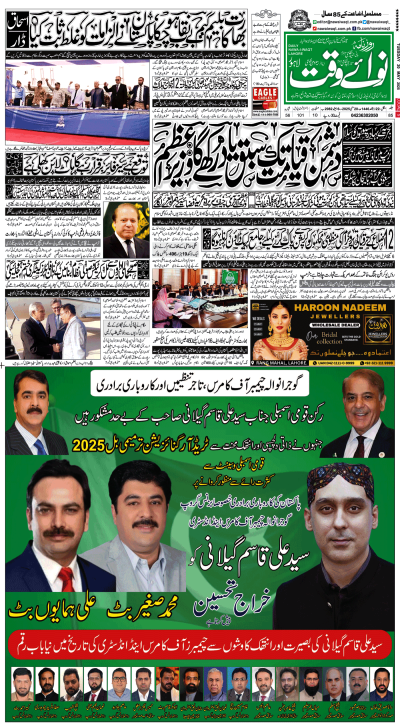In view of growing and rising Asian economic power houses like China, India and some South East Asian states, the 21st century has been described by many analysts as an Asian century.
Russia, a Eurasian power also plays a significant role in the new political alignment. Iran, despite its theocratic shackles, exudes confidence after the lifting of western sanctions in the aftermath of her successful deal with western powers on the nuclear issue. US “Pivot To Asia” reflects concerns of the predominant super power of the 20th century at the gradually but surely changing balance of forces in the region. US, for obvious reasons, wants to maintain the status quo in the East-Eastern region. One can also see the keen interest of important European countries, to forge relationships with the rising Asian powers and markets. But there is a question of historical significance begging an answer: Does Asia possesses mutually agreed rules for overcoming its inter and intra state problems and conflicts that it is faced with, to achieve peaceful coexistence? The current political and military standoff between nuclear armed Pakistan and India makes this question more relevant although this is far from being the only hot spot. Territorial disputes in the South China Sea and Middle Eastern conundrum also can’t be ignored.
Western domination of the world started with the rise of Europe after the industrial revolution a few centuries ago. Equipped with a superior mode of production and military might, Europe started colonising the rest of the world. But apart from unprecedented economic development and military might, what enabled Europe to become a nucleus of the world order of that time, was its success in shaping a European order. The Westphalian order, named after the German region where it was born about four centuries ago, emerged after long and devastating wars. It made peaceful coexistence in Europe in comparative terms possible by prescribing respect for sovereignty of states and for prevailing diversity.
Subsequently the same order was imposed on the world that was shaped by European domination and it goes without saying that US domination was its extension. But what about Asia? Are there any rules of the game here to make it possible for Asian powers to focus their energy and resources on achieving technological and socio-economic development instead of fighting wars of attrition against each other? It doesn’t have to mean the total disappearance of rivalries and competitions, but it certainly implies a capacity to contain conflicts and stop them from becoming all out wars.
In terms of regional cooperation in Asia, the one example that can be cited as the best example, is that of ASEAN. The South Eastern Asian states have not only successfully practiced regional cooperation after overcoming numerous challenges but have also been able to achieve a regional identity despite their internal diversities. SAARC was founded in early 1980s after long drawn preparatory work but it was handicapped from day one because of polarisation between Pakistan and India. In recent years many of the SAARC members have embarked on Sub-Regional Cooperation to circumvent the paralysis of the main body. Efforts on these lines appear to be making some headway. Shanghai Cooperation Organization (SCO) is a comparatively new organization (founded in 2001) to develop economic cooperation and connectivity in the vast Eurasian community has made some tangible progress. With China and Russia forming its nucleus the SCO comprises mainly of Central Asian states. It has recently attracted new members such as Pakistan, India an Iran. It will be interesting to watch the new members internalizing the spirit of the SCO. Apart from promoting economic cooperation among the member states SCO also has a security dimension although its strategic contours have yet to crystallise.
China as the most important economic super power has come out with new and bold ideas for achieving economic development through regional cooperation. Chinese grand vision of ‘One Belt One Road’ (OBOR) is based on the idea of a win-win situation for all forces, big or small, involved in regional cooperation. It alludes to the revival of the old and traditional silk route for dispelling the impression of any hegemonic design behind it.
OBOR also has a cultural component aimed at peaceful interaction between diverse cultures of Eurasian region based on mutual respect. CPEC is supposed to be the flagship project of the grand vision of OBOR. So far so good. But there are at least three serious challenges on the path of implementing this colossal idea. One, unlike Westphalian order that was framed solely in Europe with out any outside influence, the Asian cooperation is being shaped in a globalised world where interference of extra-territorial factors cannot be avoided. For example in South China Sea it is not just the countries of the region with differences of opinion about the ownership of the islands and waters. US and other western powers are active parties in claims and counterclaims in territorial disputes of the area. Two, there is no effective forum for conflict resolution or mutually accepted rules. Border disputes are a colonial legacy that has bedeviled relationships between countries. Chinese exhortations for not letting bilateral disputes blocking regional cooperation have fallen on deaf ears on many occasions. Three, terrorism apart from being a dangerous hurdle on the path of economic development is also a serious source of interstate conflicts. It is a cancer that has to be rooted out for promoting sustainable and productive regional cooperation.
The ideologues of the old Cold War in Pakistan are fascinated by the idea of a “new Cold War”. Championing parasitical economic dependence on one or the other super power, the Cold War mongers are always enthusiastic about turning Pakistan into some type of “front-line-state”. As one prominent analyst recently pointed out the old formula of Allah, Army and America is being jettisoned in favor of China, COAS and Cashmir, reflecting the deepening footprint of the security state. They unfortunately intend to add the CPEC to the aforementioned equation instead of using it as a vehicle for economic turn around in the country. Actually all this demagogy is aimed at diverting attention from the real struggle which is between the vision of a peaceful, federal democratic Pakistan embarking on the path of mainstream socio-economic development and the deep state dominated security state with authoritarian rule, rampant extremism and adventurist foreign policy. The result of this struggle will decide the future of Pakistan.






